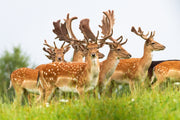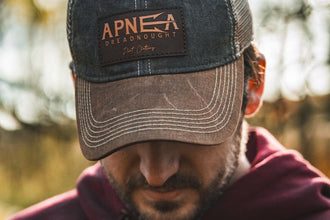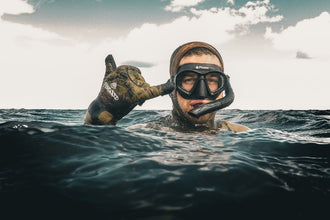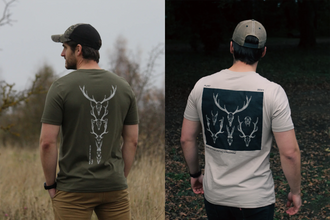
Deer have always been a part of the UK, originally only home to Red and Roe but growing to include Fallow, Sika, Muntjac, and Chinese Water Deer (CWD). With the loss of natural predators, such as Wolves, Bears, and Lynx, their numbers have exploded to the highest in 1000 years.
The combined population is now estimated to be circa 2,000,000!
Because deer are prey animals they reproduce significantly more than would be required to simply sustain their population. Historically, the predators listed above would have removed a large portion of the deer, helping to contribute to a safe population however, with the loss of these predators and despite a steady increase in the number of deerstalkers, species such as Roe and Fallow have risen a great deal in recent years.
For us, the primary concern is the welfare of deer and the responsible management of biodiversity within the UK. Whilst regulated numbers of deer create a positive impact for biodiversity in the countryside, large populations of deer are not sustainable because they can over-browse their food sources. A lack of food can cause illness and poor conditions for the deer, leading to a reduced quality of life. It is worth noting that not every species of deer within the UK has necessarily reached unsustainable levels. CWD, for example, are still relatively constrained in geographical reach and population size. Fallow, on the other hand, have been observed in extremely large herds and can suffer as a result.
As ethical and sustainable hunters who spend a lot of time observing deer patterns of life and general health, simply leaving them to suffer ill-health is out of the question. This is only made possible when individuals invest a significant amount of their time (often as unpaid recreation) getting to know how many and what species of deer occupy their land. Understanding feeding habits and observing animal health year-round, not just during the active hunting season, is paramount to establishing a robust understanding of what the situation is and if the population levels are sustainable.
Further, some deer will cause significant economic damage to commercial woodland and farmland by damaging growing young trees and demolishing crops which would otherwise be harvested for sale. The level of damage inflicted in some areas has led landowners to erect fencing to exclude deer numbers from their land. However, this does not solve the issue, only moving the deer to other areas to continue feeding or suffer from a lack of food.
We believe the most effective and appropriate method of population control is a well-informed cull plan executed by committed deerstalkers who want to see their harvest enter the food chain. The animal therefore will have lived an organic life and gets to thrive in the wild. Their dispatch is quick and humane, not suffering a prolonged and painful death as many wild animals do through illness, infection and predation; very few wild animals will pass away peacefully of old age.
We also believe that this shows appropriate reverence to the deer as they are dispatched quickly and humanely. Venison is extremely nutritious and tastes fantastic, more so when you have worked hard, with the odds stacked against you to make the hunt successful and then butchered and cooked it yourself, going on to feed our friends and family.
For some, the thought of deerstalking conjures negative connotations of trophy hunting and wasted meat. We believe it’s due to a lack of awareness around what happens and why and it is part of Flints mission to change this through positive engagement with the community. We will continue to promote and showcase just how ethical, sustainable and essential deerstalking is in the modern era and why harvesting your own food can be a better choice than the vacuum-packed steak on the shelf of a large supermarket.
Thankfully organisations such as The British Deer Society have worked tirelessly to establish and innovate training courses which can take people who weren’t aware deer are in the UK and have never shot a weapon, ready to head out on their first hunt. They are well worth investing in, but not a mandatory pre-requisite for hunting. Many reputable outfitters who can be found via search engines will take a complete novice through a weapon safety, shot placement and practice shooting before heading out.
So, what are you waiting for? Let’s get some food for the table!










